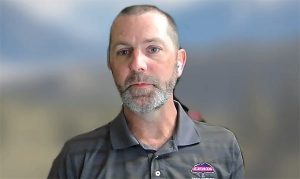The Department of Energy wants to give $690 million to Texas for home energy efficiency rebates. But for Texas and the 49 other states, D.C. and U.S. territories, getting those funds will require a complex application process and careful implementation to ensure the money actually helps consumers get big cuts in their utility bills.
Texas qualified for the most money out of the $8.5 billion in efficiency rebates from the Inflation Reduction Act, which state energy offices can now apply for, DOE announced July 27.
The IRA split the money roughly evenly between two programs: The Home Efficiency Rebates Program will help fund “whole-home” upgrades, and the Home Electrification and Appliance Rebates Program will provide rebates on major home appliances, such as electric heat pumps and stoves.
Depending on income, consumers doing whole-home upgrades may be eligible for rebates of up to $4,000 or 80% of project costs, whichever is smaller. The appliance rebates range from $840 for an electric stove to $8,000 for a heat pump for space heat or cooling, up to a maximum of $12,000 per household.
DOE is estimating total consumer savings of $1 billion over the life of the programs, which will run through Sept. 30, 2031.
“Americans living in energy-efficient, electrified homes bring us one step closer to a cleaner, safer future,” Energy Secretary Jennifer Granholm said in the announcement.
Promoting home electrification has become a hot-button issue in Congress and in certain states where legislatures have passed laws prohibiting any bans on natural gas hookups. DOE treads carefully on the issue, stating the rebate programs “will offer support and incentives to consumers to retrofit and electrify their homes, without banning or restricting the use of other technologies.”
At the same time, the programs are aimed at growing the market for energy efficiency and electrification, with states required to submit market transformation plans as one step in a phased application process that releases the funds in four stages.
The funds can only go to state energy offices, and the dollars involved are significant, with more than half the states receiving more than $100 million. After Texas, California comes in second with $582.2 million, while at the bottom of the list, American Samoa and the Northern Mariana Islands are slated for $49.9 million and $49.8 million, respectively.
DOE is asking states and territories “to prioritize households that stand to benefit most from the funds, including allocating at least half of the program funds to reach households with incomes at or below 80% of their area median income,” according to the announcement.
But states will probably vary in their ability to apply for and channel the money to their residents, said Lowell Ungar, director of federal policy at the American Council for an Energy Efficient Economy.
“There are some states that have very substantial [energy efficiency] programs already. They have infrastructure in place to design programs; they have contractors to implement them,” Ungar said. Other states “have new programs or no programs and small state energy offices. They’re going to have more difficulty. It’s going to take them longer to set these programs up.”
So far, only one state, Florida, has signaled it will turn down the IRA funds. Gov. Ron DeSantis (R) directed the state’s energy office to notify DOE it will not apply for any of the $346.3 million that the state is eligible for. (See DeSantis Rejects $346 Million in IRA Energy Efficiency Funds.)
States have until Aug. 16, 2024, to let DOE know if they are going to apply for the money and until Jan. 31, 2025, to submit an application, according to a department spokesperson. If Florida or any other states do not apply for their allocations by that date, the money will be split among the other states.
The Requirements
Getting the money involves a four-step process for each program, as spelled out in extensive detail in a 100-page document.
Approval of an initial application releases 20% of a state’s allocation and triggers a second phase in which an implementation blueprint must be submitted at least 60 days before a program launch. Approval of the implementation plan releases another 35% of the funds.
A market transformation plan is required for the next 25%, followed by quality assurance plans and program reviews for the final 20%.
The whole-home energy rebates are particularly complicated, as they can be based either on a contractor estimating energy savings based on computer modeling, or actual performance, in which savings are measured over time.
With the programs’ focus on low-income households, having systems in place to verify homeowners’ or renters’ incomes will be another big challenge.
DOE has promised a range of support measures, from sample responses to application questions and one-on-one meetings, to targeted analysis to help states design programs to reach “specific housing, climate or economic objectives.”
States also can apply for special “early administrative funds” to help them with the application process; according to a DOE spokesperson, dozens of states have applied. A state may apply for up to 2.5% of its allocation for each program, with a cap of $2.5 million if they apply for the funds for one program and $5 million if they apply for the funding for both, the spokesperson said.
Any early funding will be subtracted from a state’s total allocation, but states are also allowed to use up to 20% of their total allocation for administration and implementation.
An additional $150 million in IRA funding is available to states for grants to help with contractor training in home energy efficiency. DOE issued guidelines for this program in mid-July, with applications for the grants due by Sept. 30.
As Ungar noted, this extra support may be especially needed for states with small energy offices. Ohio does not have a separate energy department to manage the $249 million the state could receive. Rather, the state’s energy efficiency programs are housed within the Department of Development.
Brian Bohnert, the department’s public information officer, said the staff is “well equipped” to handle the funding. But, he said, they have applied for early administration funds and are working on an application for the contractor training grants to “ensure a smooth rollout of the rebate programs, as well as guarantee we have the sufficient workforce to best address the needs of Ohioans.”
The States
State energy offices began talking about the IRA’s energy efficiency money almost from the moment President Joe Biden signed the law on Aug. 16, 2022. What it will take to implement these programs effectively and efficiently also has been a hot topic at energy industry conferences, with concerns raised about a range of issues, from the staff that will be needed, to workforce training and consumer education.
David Terry, president of the National Association of State Energy Officials (NASEO), says his members are ready, but the complexity of the rebate programs will require a certain amount of flexibility in how they are implemented. While state energy offices have handled multimillion-dollar federal programs in the past, he said, “what is new and different is [that] residential energy efficiency is a complicated task.”
Housing markets vary widely within states and nationally, Terry said. “By that I mean housing type, structure, the quality from a maintenance or structural perspective; the climate zone for weatherization ― hot and cold and humid,” he said. “Some technologies that make sense in Ohio or Virginia don’t make sense in Hawaii or Puerto Rico.”
Nick Burger, deputy director of the Energy Administration at D.C.’s Department of Energy and Environment (DOEE), said his office has been doing “a lot of planning” for the $59.4 million coming to the nation’s capital. But, he said, “there are limitations to what we’ve been able to do up until this point because we were, like everyone else, waiting on more detailed guidance from the Department of Energy.”
For D.C. a major challenge is figuring out how to use the IRA money to build on the city’s existing programs, without replicating them, Burger said. “We’ve had a multifamily electrification and efficiency program up and running here for almost two years, so we have some sense of what it costs to sort of make transformative change,” he said.
DOEE will be collaborating with the DC Sustainable Energy Utility, which runs a range of energy efficiency programs in the city, and the Department of Housing and Community Development, he said. The D.C. Council also is considering a bill called the Healthy Homes and Residential Electrification Amendment Act (B25-0119), which would set a target for the city to provide residential electrification retrofits for 30,000 low-income households at no charge to residents by Dec. 31, 2040.
DOEE will likely need to bring on additional workers for the IRA programs, but Burger said the department is well staffed so “we at least have the ability to sit down and start thinking through in some detail how we want to create and implement a program.”
“It’s one thing to make these upgrades free for households; that’s important,” he said. “But in my mind … the second step is to make sure that they’re getting through the whole process of auditing a home, identifying what the upgrades are that the home needs, helping the household or the homeowner navigate the process of working with a contractor, doing the paperwork. These are all steps that aren’t even about money,” he said.
Burger also cautioned that as big and welcome as the federal dollars are, they are not sufficient. DOEE has identified 100 multifamily dwellings that need upgrades, and he said about 67% of the city’s 170,000 rental units are more than 45 years old.
“When you think about a single-family home, we’re talking about replacing all of our gas appliances and upgrading our old-fashioned air conditioners and ideally making the home more energy efficient,” he said. “As we do that, the total cost per house could be $30,000 or more. … For the kind of scale of change that we would like to see, it’s going to take more resources.”
Contractors and Consumers
While state energy offices will apply for and administer the rebate money, contractors will likely be the main point of contact for getting consumer buy-in for the programs.
Speaking during a media call on Tuesday, Steve Skodak, CEO of the Building Performance Association (BPA), said his organization and its members have been calling for federal funding for rebate programs and worker training for the better part of a decade. The IRA energy efficiency funds are widely seen as unprecedented and a potential economic bonanza for the industry.
But, Skodak said, “a lot still needs to be decided at the state level before these funds are put to use.”
The IRA’s funding for contractor training also comes with a complicated application process, beginning with a state-level needs assessment to identify “the gaps in the industry where workforce needs to be and how to get them trained,” said Robin Yochum, BPA’s state outreach coordinator.
Similar to the rebate funding, the training funds will be allocated to individual states based on a formula and will be awarded in two phases, with half paid out after an application is accepted and the remaining half following a program evaluation and update.
Yochum acknowledged that even with the training funds, building up a workforce will take time. “Some of the certification programs can take six months to a year to get somebody fully trained, depending on where they want to go,” she said. “We can start out with basic building science principles training, get them in the door … and then they can move up and do the rest of the certification program.”
But Burger said the technical training is only part of what’s needed. “There’s also kind of a mindset piece,” he said: “working with our contractors who have spent the last 20 or 30 years doing excellent installations of gas furnaces or traditional air conditioners and helping them understand the new technologies — why they’re good; why they work — because I think there are a lot of misconceptions.”
BPA and its members are focusing more on selling homeowners on the whole-home upgrades, but Terry thinks the electrification and appliance rebate program may be simpler for states to roll out first.
At the same time, he said, NASEO members “have been crystal clear [that] efficiency, as in insulation and proper air sealing, comes first so that whatever form of heating and cooling is used, that [utility] bill does not go up,” especially in colder climates.
“The states are keenly aware of the importance of consumer protections around both these programs” to ensure any home upgrade, be it insulation, a heat pump or water heater, is installed and functions properly, Terry said. Mechanisms will be needed to “address things that will go wrong ― as you know, something always goes wrong ― and how you make sure that gets rectified.”
Both he and Burger stressed that getting the programs up and running will take time, and consumer expectations have to be dialed back.
“I think that inadvertently, we collectively have set this expectation that everyone in America is going to get a rebate, and they’re going to get it tomorrow morning,” Terry said. “Not many people will get it unfortunately; those that get it are those most in need.”
D.C. residents looking for rebates are going to have to “hang on a little bit longer,” Burger said. “The speed is going to be dictated by how fast the Department of Energy can get the funding out to the states, and then once we have the money, we still have to go through our process of getting authorization to spend those funds, getting them loaded into our budget.
“We’re going to try to go as quickly as we can, while making sure that we set up good programs that are likely to succeed,” he said.


